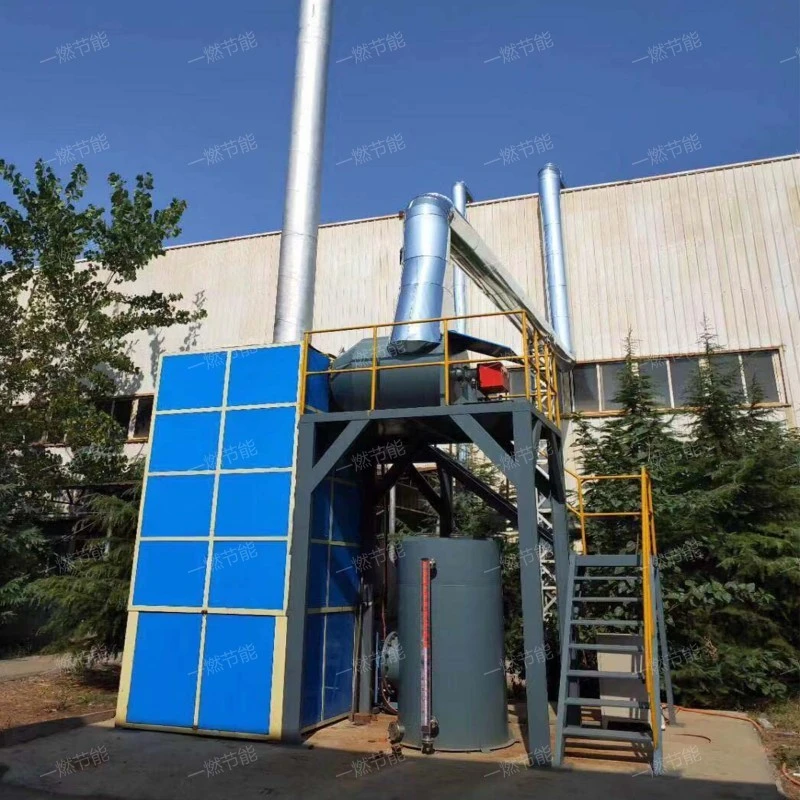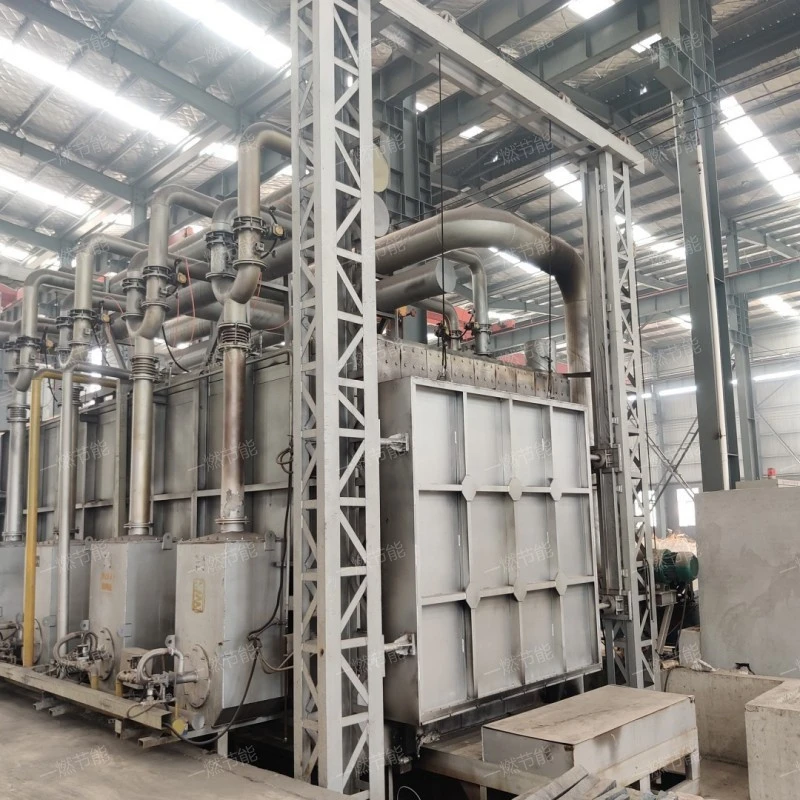Introduction to Flue gas denitrification in the forging industry and SCR flue gas denitrification advantages and features
Flue gas denitrification in the forging industrythat is, selective catalytic reduction technology is a technology used to reduce the emission of nitrogen oxides in flue gas.,at work,Catalysts are used to promote the selective catalytic reduction reaction between reducing agents (such as ammonia and urea) and NOx in flue gas. Under the action of catalyst, the reductant preferentially reacts with NOx to generate harmless nitrogen and water vapor, but hardly reacts with oxygen in flue gas. This chemical reaction is usually carried out in the temperature range of 200-450℃, and the specific reaction temperature depends on the type of catalyst selected.。
1、Brief introduction of Flue gas denitrification in the forging industry
Flue gas denitrification in the forging industrythe full name is selective catalytic reduction technology, which is an advanced flue gas denitrification technology.,It is famous for its high-efficiency denitration ability, which can usually reach more than 90% denitration efficiency. This means that the Flue gas denitrification in the forging industry technology can significantly reduce the concentration of nitrogen oxides (NOx) in flue gas and make it meet strict environmental protection emission standards. This high-efficiency denitration ability is mainly due to the promotion of the catalyst, which makes the chemical reaction between reductant and NOx more rapid and thorough.、The by-products produced by the technology are mainly nitrogen and water vapor, which are harmless to the environment and will not cause secondary pollution. Compared with the traditional wet flue gas denitrification technology, the Flue gas denitrification in the forging industry technology does not need to use a lot of water resources and will not produce pollutants such as wastewater, which is more in line with the requirements of environmental protection and sustainable development.、There are many kinds of catalysts used in the technology, including vanadium-based catalysts and titanium-based catalysts, which can promote the chemical reaction between reductant and NOx at a lower temperature. At the same time, the active components and carrier materials of the catalyst are constantly being developed and improved to improve its catalytic efficiency and service life. This enables the Flue gas denitrification in the forging industry technology to maintain efficient denitrification capability in a wider temperature range and more complex flue gas conditions.、The initial investment of technology may be high, but in the long run, its economic feasibility is remarkable. The high-efficiency denitration ability of Flue gas denitrification in the forging industry technology can significantly reduce the environmental emission cost of enterprises and avoid fines and legal risks due to illegal emissions. In addition, Flue gas denitrification in the forging industry technology can also reduce operating costs and improve the economic benefits of enterprises by recycling heat energy.、The technology is suitable for many industries and processes, such as coal-fired power plants, iron and steel smelting, cement production and so on. These industries will produce a large number of NOx emissions in the production process, and the Flue gas denitrification in the forging industry technology can provide effective denitrification solutions for them. In addition, the gate technology can be adjusted and optimized according to different flue gas components and emission requirements to meet different denitration requirements.,It has a wide range of uses, including environmental protection, Improve product quality, Meet the requirements of environmental protection, environmental protection and Flue gas denitrification,is a Flue gas denitrification in the forging industry newly developed by One-combustion energy saving。

Flue gas denitrification in the forging industry
2、Flue gas denitrification in the forging industry characteristics
The Flue gas denitrification in the forging industry features are as follows:
- Stable operation and stability
- high efficiency
- Environmental protection
- selectivity
- High denitration efficiency
The technology runs stably and reliably, and is suitable for various scenarios with large changes in flue gas flow, composition and concentration.
Gate technology can effectively remove NOx from flue gas, and the denitrification efficiency can usually reach more than 90%.
The final products of Flue gas denitrification in the forging industry technology are harmless nitrogen and water vapor, which will not cause secondary pollution to the environment.
Under the action of catalyst, the reducing agent mainly reacts with NOx selectively, but less with other components (such as oxygen) in flue gas, thus reducing unnecessary consumption.
The denitration efficiency of Flue gas denitrification in the forging industry technology can reach more than 90%, and it is a widely used post-combustion denitration technology at present.

Flue gas denitrification in the forging industry
3、Flue gas denitrification in the forging industry video detail
You can buy Flue gas denitrification in the forging industry according to your needs and show you Flue gas denitrification in the forging industry videos.。
Flue gas denitrification in the forging industry
As you can see from the live video.,Shandong yiran energy-saving environment protection co., ltd in the course of work,Ammonia gas or other suitable reducing agent (such as urea aqueous solution) is sprayed into the flue gas upstream of the catalyst at high temperature. Under the action of catalyst, the reducing agent selectively reacts with nitrogen oxides (NOx) in flue gas to generate pollution-free nitrogen and water vapor. Because NH3 is selective, it only reacts with NOx and basically does not react with O2, so this technology is called selective catalytic reduction denitrification.。
4、Flue gas denitrification in the forging industry principle
Flue gas denitrification in the forging industrythe principle is simple.Ammonia gas or other suitable reducing agent (such as urea aqueous solution) is sprayed into the flue gas upstream of the catalyst at high temperature. Under the action of catalyst, the reducing agent selectively reacts with nitrogen oxides (NOx) in flue gas to generate pollution-free nitrogen and water vapor. Because NH3 is selective, it only reacts with NOx and basically does not react with O2, so this technology is called selective catalytic reduction denitrification.,Widely used in Promote sustainable development, Meet the requirements of environmental protection, Improve product quality, environmental protection and Flue gas denitrification,is a common Flue gas denitrification in the forging industry,is based on One-combustion energy saving is carefully developed by One-combustion energy saving combined with advanced technology。

Flue gas denitrification in the forging industry
5、Flue gas denitrification in the forging industry real beat
One-combustion energy saving Flue gas denitrification in the forging industry, product manufacturer, product features, is the ideal choice for new and old customers.。

Flue gas denitrification in the forging industry
Note: All the pictures in this article were taken by One-combustion energy saving manufacturer.。
Flue gas denitrification in the forging industrywidely used incoal-fired power station,cement plant,cement plant,coal-fired power station,building materials and other industries,the product looks beautiful.。
Related recommendation
-

Introduction to Circulating heating furnace, how much is the price of the heating furnace?
2025-5-27 -

Introduction to Continuous heating quenching furnace, how much is the price of the heating furnace?
2025-5-27 -

What is a Automatic continuous quenching heating furnace? How much is the price of the forging furnace?
2025-5-27 -

台车热处理炉
2023-04-25 -

What is a Tube heating furnace? Introduction to the advantages, characteristics, and principles of the Forging furnace
2025-5-27 -

Introduction to Normalizing furnace box type and heating furnace structure principle
2025-5-27 -

Introduction to Preheating gas trolley furnace, introduction to forging furnace function advantages and characteristics
2025-5-27 -

Introduction and advantages of Rapid heating heat treatment furnace
2025-6-18 -

What is a Automated deep well furnace? How much is the price of the heating furnace?
2025-5-27 -

What is a Bright heat treatment heating furnace? Introduction to the advantages, characteristics, and principles of the forging furnace
2025-5-27




